Family AraneidaeGenus Argiope, species bruennichiWasp spider
|
The common name of this beautiful spider is wasp spider. This spider is, like
all orb-weavers, not poisonous for us.
The spider prefers to weave her web between grass at a height of 20 -30 cm
The adult female has a shining silvery cephalothorax (head) and a yellowish
abdomen with black and white bars across it.
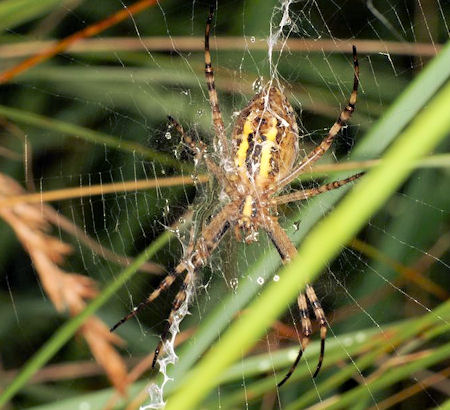 |
|
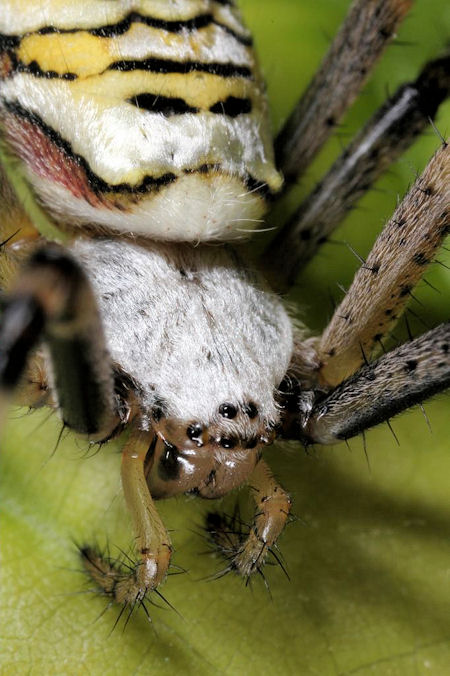 |
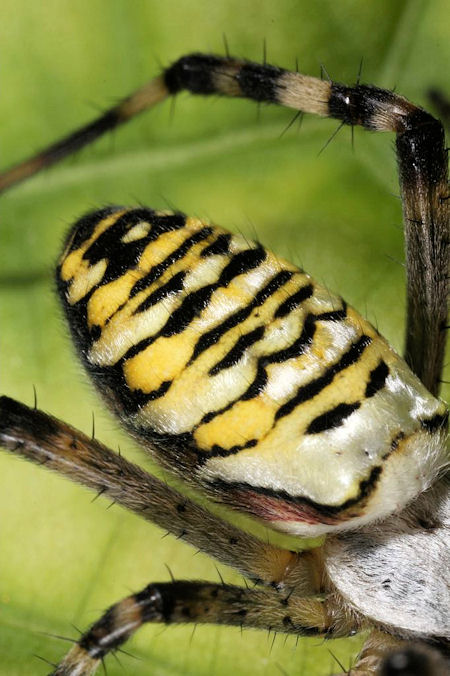 |
| Detail of the female | |
 |
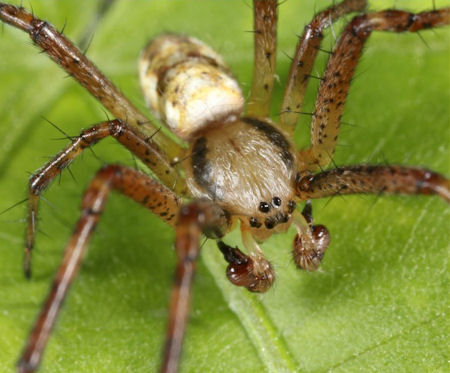 |
| Detail of the male | |
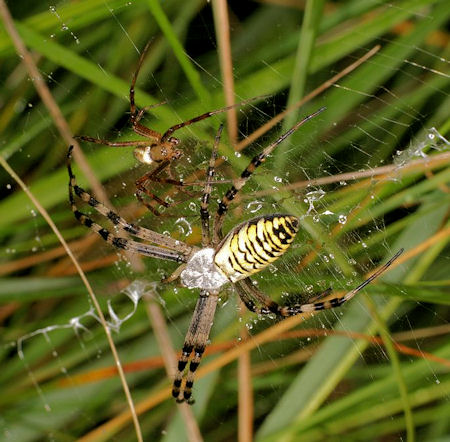 |
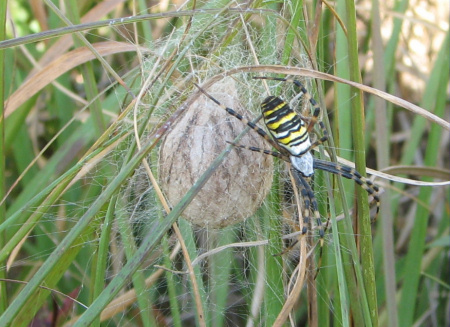 |
| The adult female is much larger than
the male. The male measures between 4 and 6 mm while the female has a full
grown size between 14 - 17 mm. When the female is loaded with eggs she can become enormous in size. |
Argiope bruennichi with cocoon (foto van Iljitsj van Kessel) |
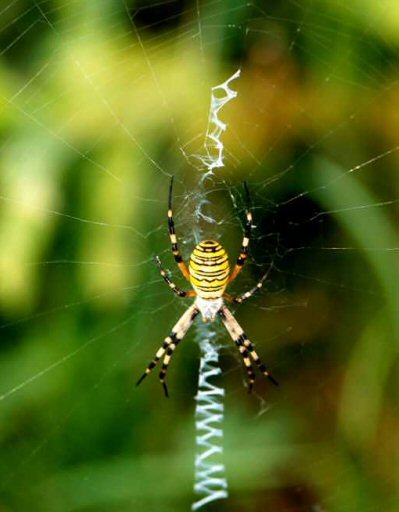 |
Argiopes can be easily
identified by the zigzag of white silk in their webs. Like all orb-weavers,
they have ringed legs. The function of the zigzag of white silk in their web is not clear. There are several ideas what the purpose may be. It may be used to attract insects because it is radiating UV-light and that attract insects. Another explanation is that it is to frighten predators. The spider shakes the web vigorously when something large is approaching and that result in a blurry white spot. Another explanation can be that the spider makes the web clear to see and that should avoid large animals to destroy the web. |
| The characteristic zig-zag in her web |
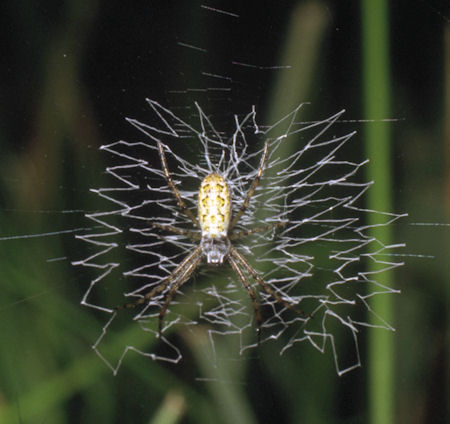 |
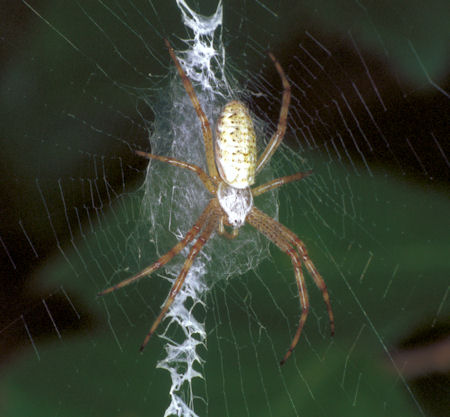 |
| The zigzag is not in the web when
the spiders are young. In the pictures you can see that the young spider
sits in a circular zigzagging construction. When the spider grows older it makes both forms and eventually the spider only makes the zigzag in a line. |
|
|
Youngsters just hatched from their papery cocoon. |
|
|
The just hatched spiders are very small but already have all the features as the adult spiders. The picture was taken from a spider walking over a news paper. |
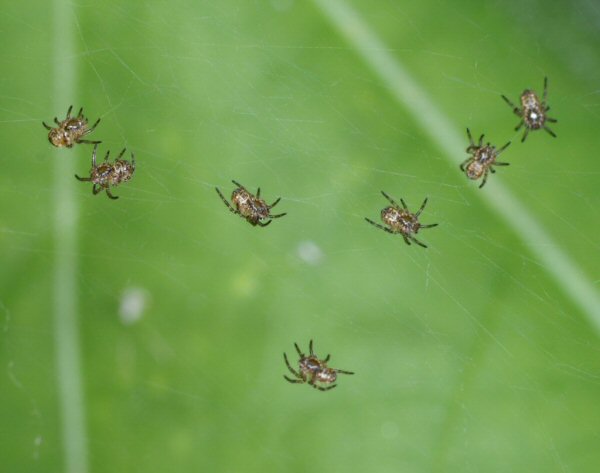 |
|
|
In July the males mate with the females and often loose their life or some legs after their 'duty'.
|
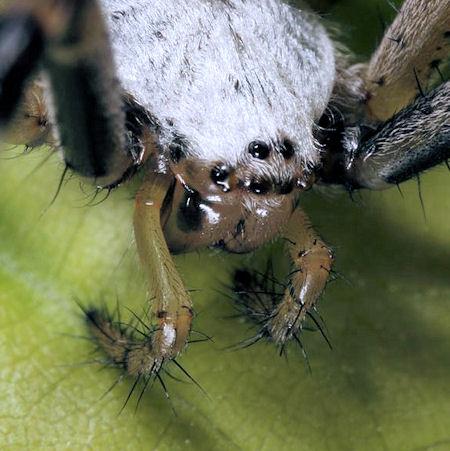 |
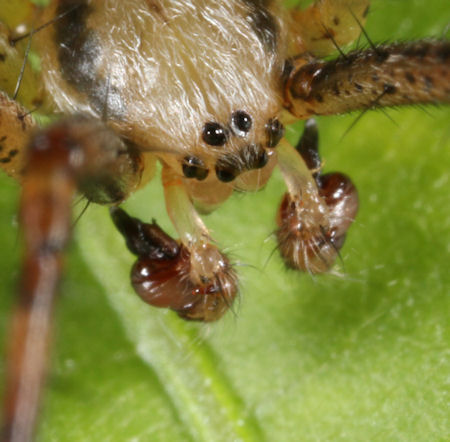 |
|
Palps of the
female (left) and male (right) spider.
|
|
|
When the spiders are
young the differences between the sexes is not so obvious.
|
|
| Details of the spinners that releases web silk to make her web, cocoons for her eggs or wrap prey | |
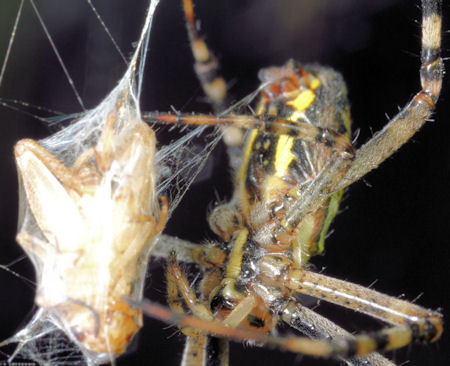 |
|
| The spider lives in open grassy areas and makes her
web amongst the grass and low herbage. In the Mediterranean she is very common but the last decennia she is moving up North. She is reported in The Netherlands, around Berlin in Germany and in Great-Britain where she was already reported in 1940. When the spider catches her prey she wraps it very fast in silk. After a lethal bite with venom and protein dissolving enzymes she waits until the prey does not struggle anymore and sucks it empty or hangs the packet in her web to consume it later. If a too large insect gets into her web she bites the threads in which the insect hangs loose of her web until the insect falls out. |
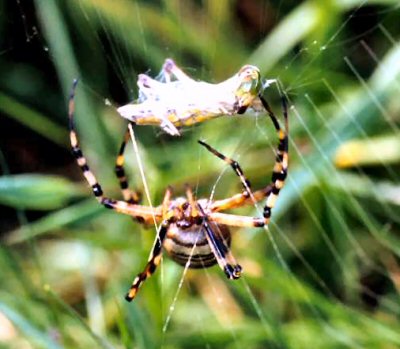 |
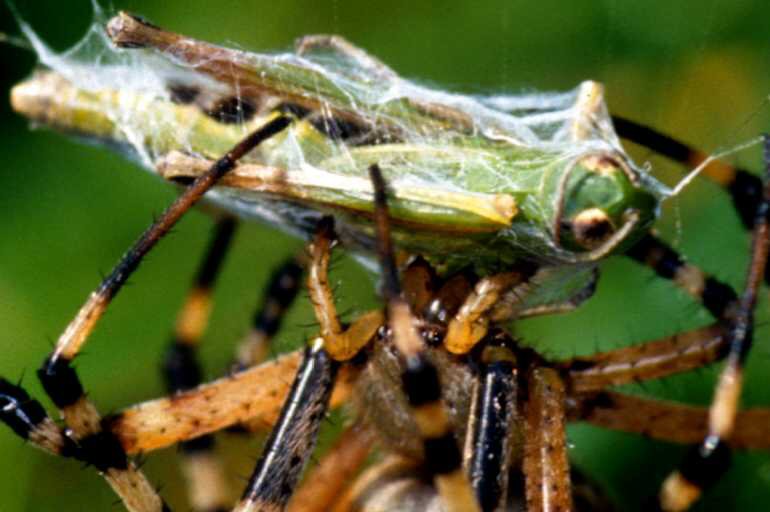 |
|
| Jummie, wrapped grasshopper as desert! | |
Ed Nieuwenhuys, 13 August 2011
September 2 2008, September 13, 2003